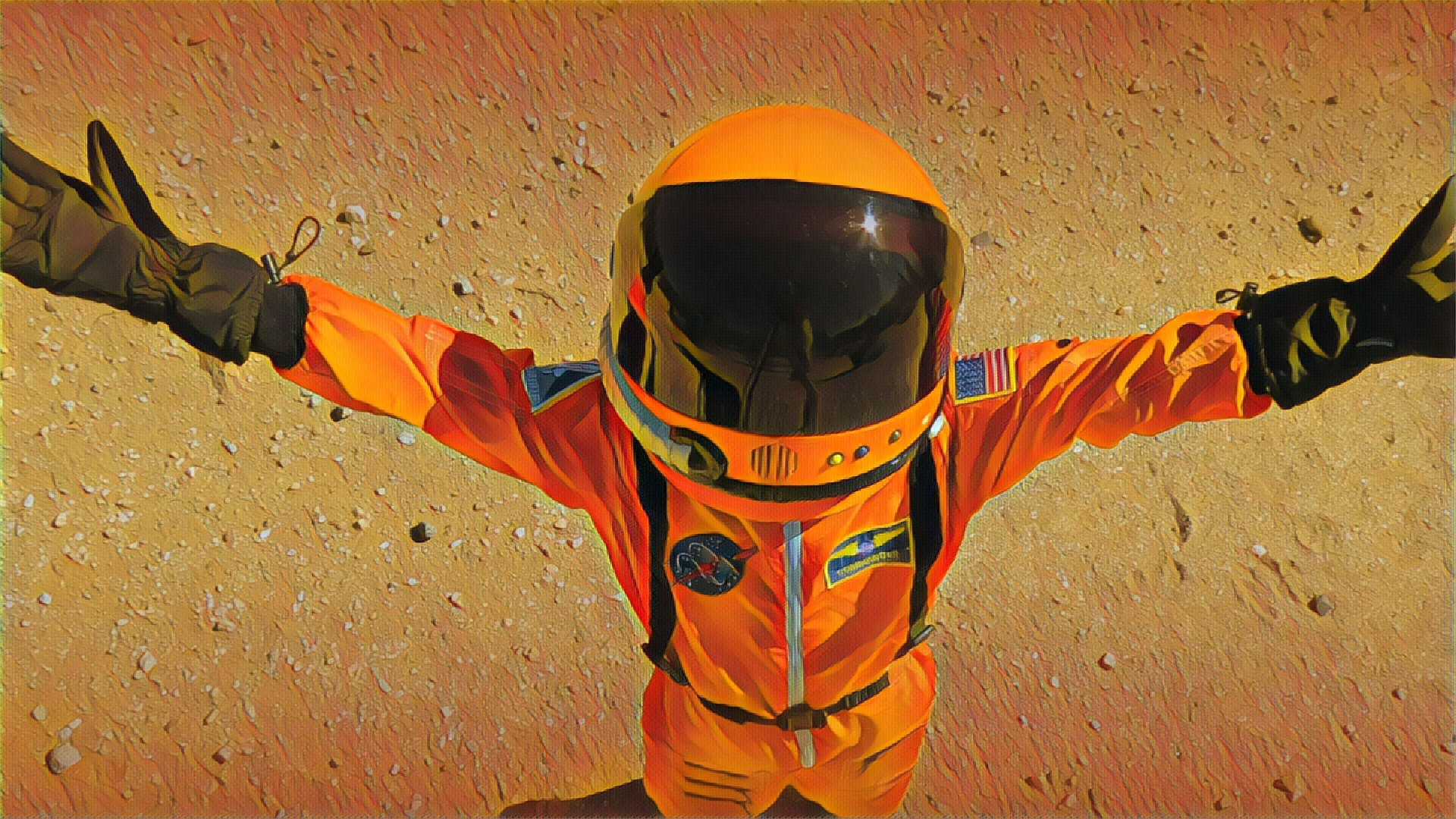Simulant
Science fair supplies for my youngest daughter: simulated Mars regolith. Thanks for making these simulants available, UCF Exolith Lab!

Air: Generation Mars, Book One
The surface of Mars has the biggest volcanic mountains and deepest canyons in the solar system. There are the remains of water features everywhere, both tiny and vast, yet water hasn’t flowed on the surface for over three billion years. The whole planet is red because it’s rusty. Actually, it’s not really red—more of a brownish orange with blacks and greys and whites mixed in. But someone long ago called it “the red planet”, and the name stuck. A day on Mars is about 40 minutes longer than a day on Earth and is called a sol. The sunsets are upside down from those of Earth: shades of blue layering out from the Sun, diffusing into yellows and pinks and oranges above. Mars has two moons that move in opposite directions across the sky. There is very little atmosphere, and what there is consists mostly of carbon dioxide, the same gas that we exhale here on Earth. The wind blows hard at times, yet the atmosphere is so thin that you might barely notice it. Such winds can lift dust from the surface though, sometimes creating massive dust storms that blow for days. Occasionally, one of these storms will grow to cover the entire planet.
Which is all to say that it’s a weird place.
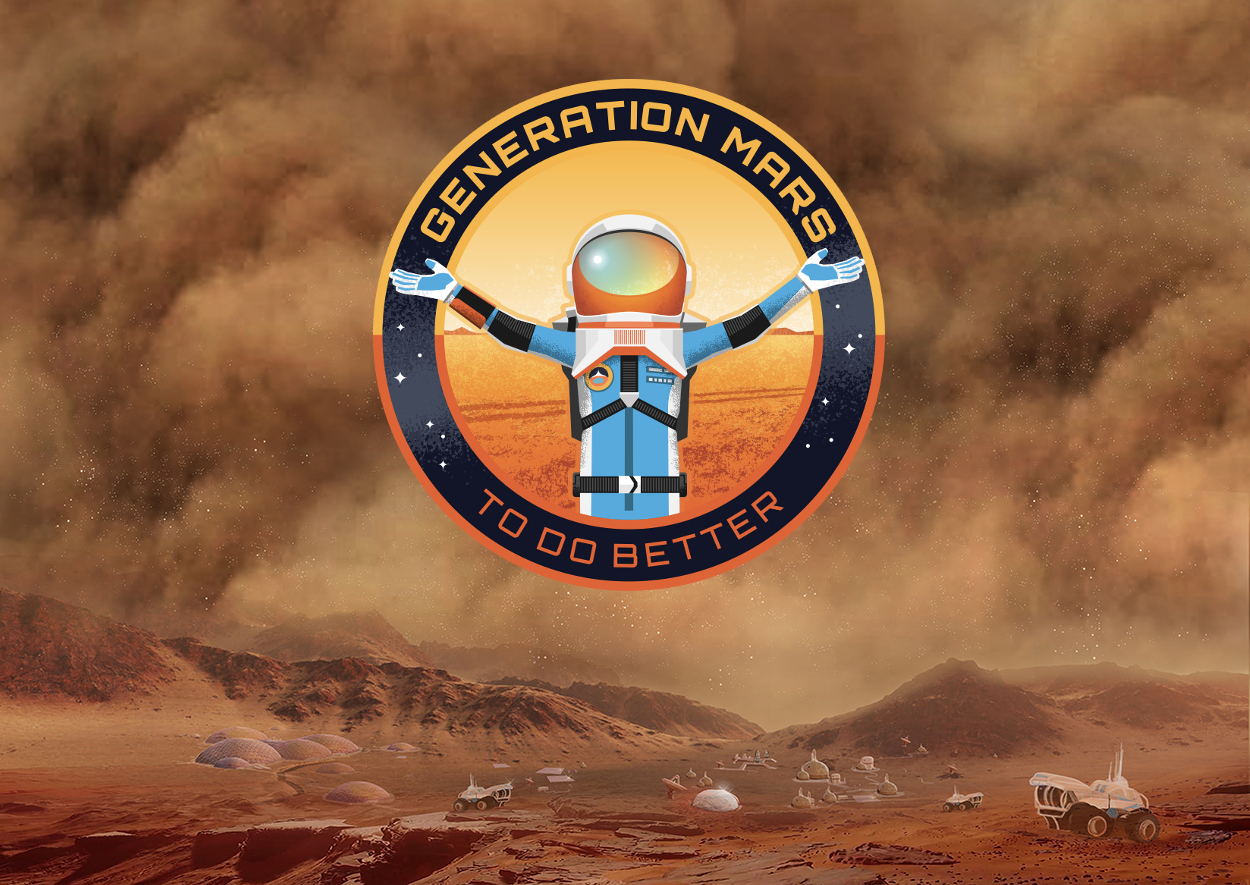
Air: Generation Mars, Book One
Available now: https://www.amazon.com/Air-Generation-Mars…/dp/1733731024
(image: composite logo with Luis Peres)
Trouble
Nina’s voice came over the comm system: “Sally, we have a situation here.” Her voice was higher than normal. “Can we open a private channel.” That was all Cas heard. It was enough. Adults in the colony always made it a point to include the children in everything that happened. Conversations were open; secrets were not kept. For Sally and Nina to suddenly talk privately meant that something out of the ordinary had happened. Something bad.
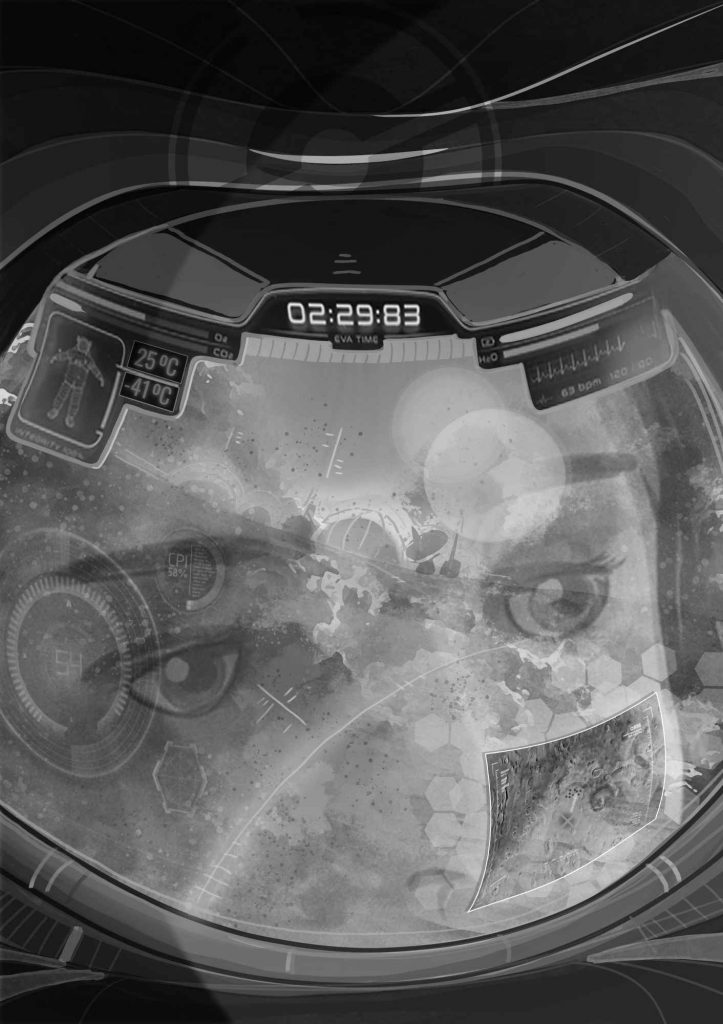
Air: Generation Mars, Book One
Available now: https://www.amazon.com/Air-Generation-Mars…/dp/1733731024
(image: Luis Peres)
Halloween story
Family and friends are gathered in the basement. It’s a party basement, with music, darts, ping pong, food and drinks. Jack-o-lanterns and witches and skeletons are taped to the walls. Kids are running around, costumes slowly falling off. Parents are chatting. The lights have been turned off upstairs to discourage late trick-or-treaters.
The doorbell chimes.
Ori in trouble
There was a sudden roar, louder than any noise Ori had ever heard. She sank to the floor, pulled her knees to her chin, closed her eyes, and cowered against the closed door. She had never felt wind before, only slight movements of air from the distribution system in the colony. But now she felt a terrifying rush of air over her. There were crashes and groans all around, and she opened her eyes to see the content of the dome—tables, chairs, lab equipment, plants, all—falling and shifting in the direction of the wind. She closed her eyes and screamed.
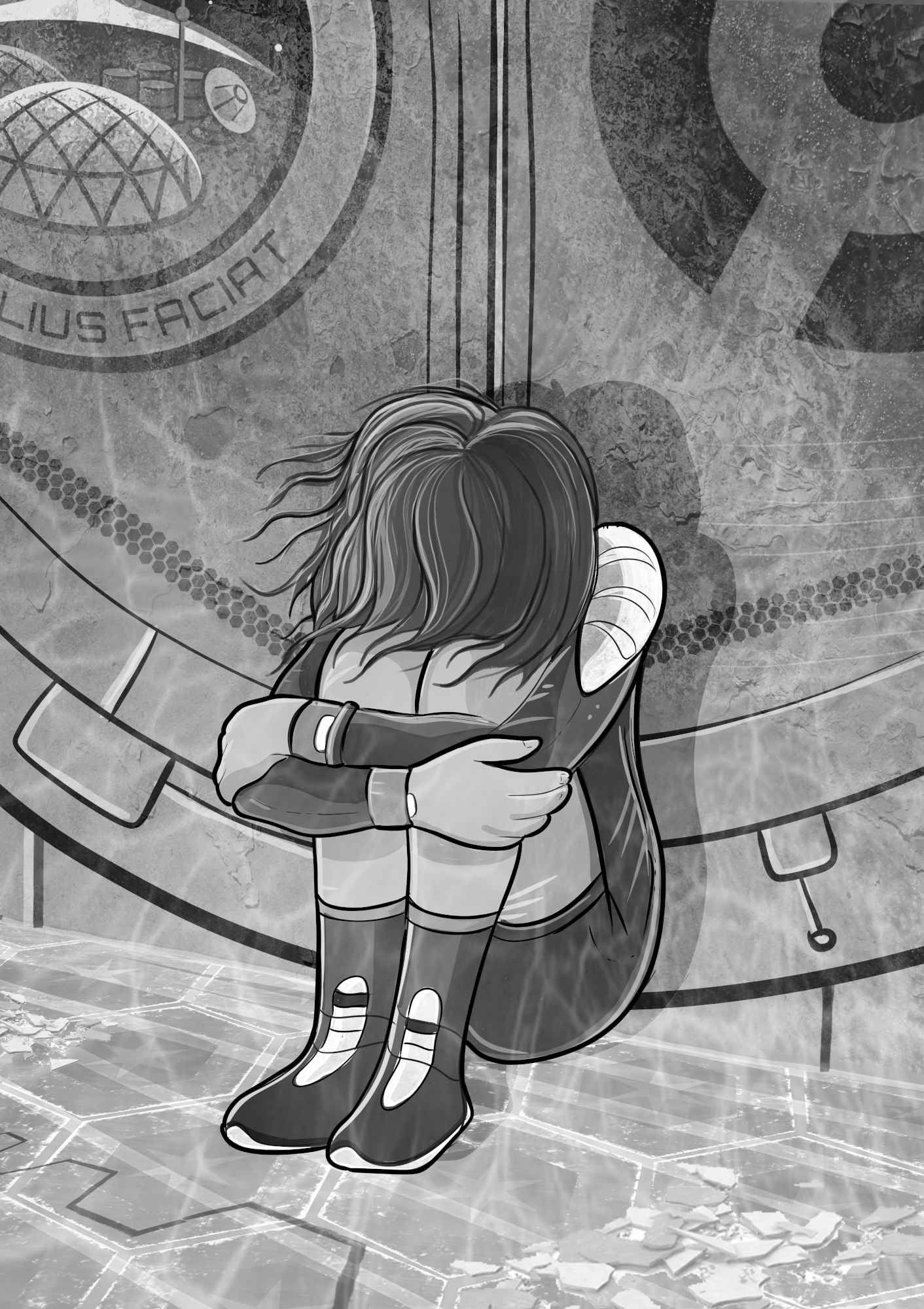
Air: Generation Mars, Book One
Pre-order now: https://www.amazon.com/Air-Generation-Mars-Boo…/…/1733731024
(image: Luis Peres)
Static
As the wind of the dust storm blew, billions of dust particles collided with and slid past the primary surface antennae array. Over time, this rubbing of dust on metal caused an electrical charge to build up on the array. Rub a balloon on your hair and stick it to the wall. Rub your socked feet in the carpet on a winter evening and then touch your sibling. These are examples of such static charges.

Air: Generation Mars, Book One
Preorder now: https://www.amazon.com/Air-Generation-Mars-Boo…/…/1733731024
(image: Luis Peres)
Leak
However, there was a problem with this particular piece of polycarbonate in this particular door. When it was installed, one of the bolts was overtightened slightly, causing a small, too small to notice, crack that radiated barely a millimeter out from the bolt hole. This crack was hidden by the backing plate. Over time, what started as a millimeter lengthened little by little with each pressure cycle of the airlock. Once the crack extended past the silicon seal, it had begun to vent air to the Martian atmosphere, ever so slightly.

Air: Generation Mars, Book One
Coming in October
Walking in dust
As they walked, Sally told them about dust storms. She used words like “polar vortex” and “baroclinic wave”, which the kids did not understand but which made sense to them as she spoke. One of Sally’s teaching tricks was to use words and phrases that the kids did not know in ways that made their meaning obvious.
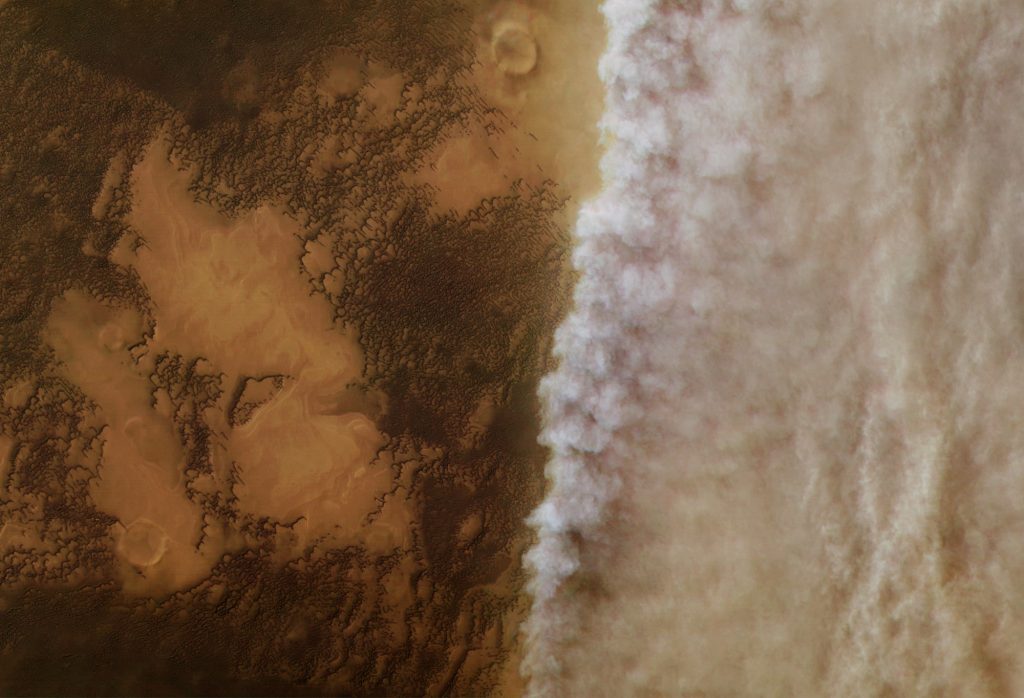
Air: Generation Mars, Book One
Coming in October
(image: ESA/DLR/FU Berlin, CC BY-SA 3.0 IGO)
Dust
Cas looked out through her visor. All she saw was brown, a moving flow of brown, shades of brown ranging from orange to red to pink to yellow, flowing past her in the wind. That wind was moving 50 kilometers per hour with gusts even higher. But the air was so thin that she could feel only slight tugs on her suit. In the lower right corner of her visor screen was the small map of the surface buildings with the red dot that showed where she was standing.
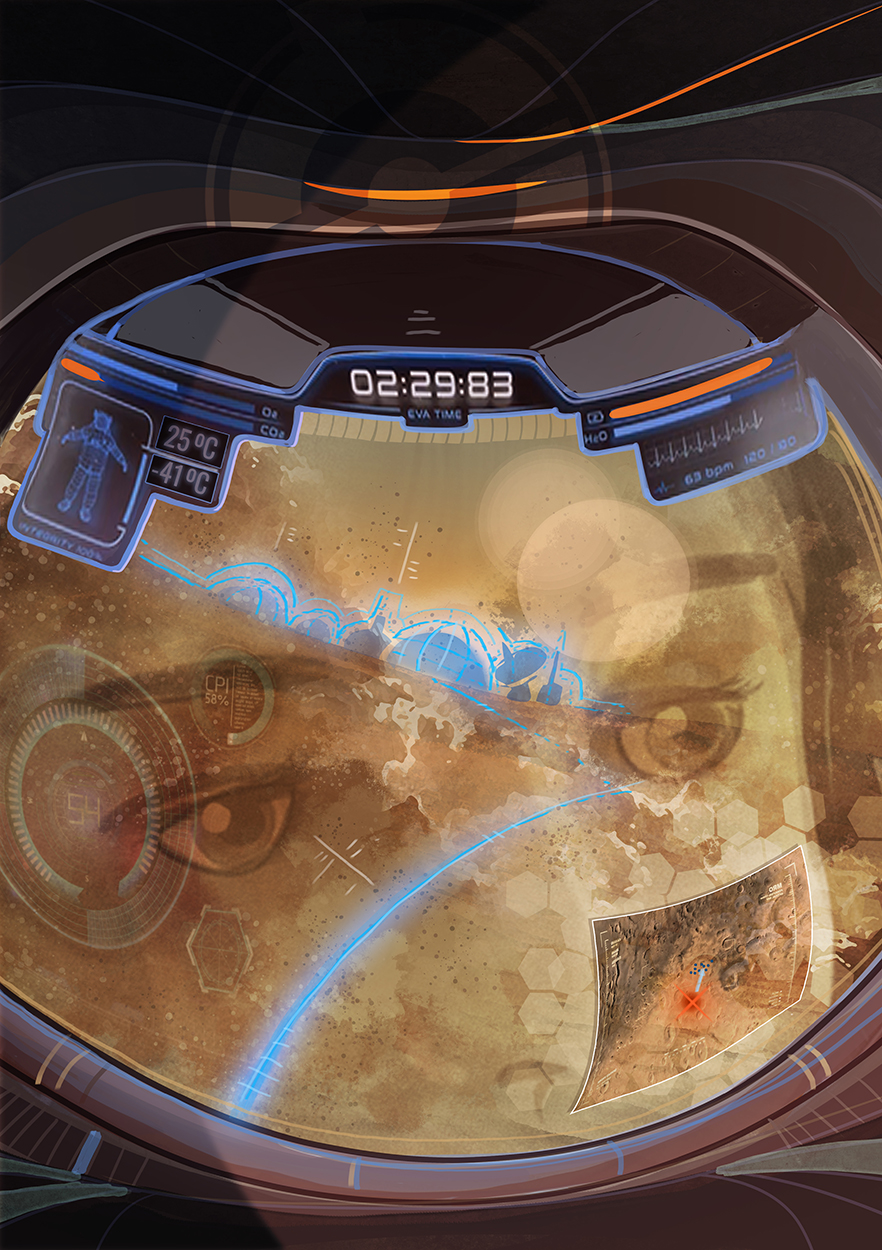
Air: Generation Mars, Book One
Coming in October
(image: Luis Peres)
